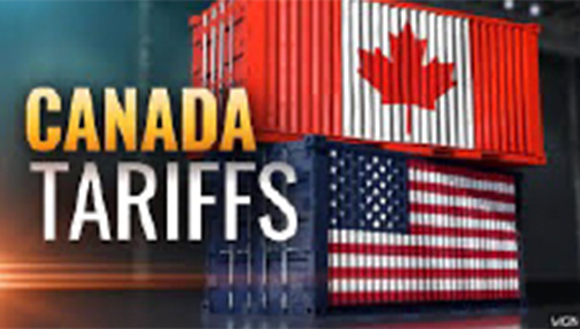Trump Says He Will Impose 50% Tariff on Copper
U.S. President Donald Trump is set to announce a 50% tax on imported copper, adding to the growing list of punishing tariffs causing economic dislocation in Canada and around the world. The tariffs are expected to be announced during a cabinet meeting at the White House. The Trump administration announced a Section 232 investigation over the import of the metal in February. Trump has already imposed Section 232 tariffs on steel, aluminium, and autos, which have been particularly damaging to the Canadian economy, leading to job losses and a drop in exports.
Canada is a major exporter of copper to the U.S., and a 50% tariff will make it more expensive for U.S. importers to bring in the metal. According to federal data, Canada exported $9.3 billion worth of copper and copper-based products in 2023, with a majority of that—52%—going to the U.S. China and Japan followed, with 17% and 12% of Canadian exports, respectively. Most of Canada’s copper exports come from British Columbia (B.C.), but Teck Resources, the Vancouver-based metals giant that owns a major mine in the province, said it should be able to avoid Trump’s threatened tariffs.
These tariffs could lead to “very concerning” developments for copper operations in Quebec, according to Pierre Gratton, president and CEO of the Mining Association of Canada. Mining company Glencore owns the decades-old Horne Smelter and the Canadian Copper Refinery in that province, businesses that employ hundreds of people and process tens of thousands of tons of the metal every year. Gratton says the tariffs “may inadvertently help Chinese refiners” who produce copper at a lower cost, hurting copper producers who sell concentrate to Canada and to manufacturers who purchase Canadian refined copper products.
Trump and Prime Minister Mark Carney are locked in negotiations to come to some sort of trade resolution by July 21. The president is pursuing a three-pronged approach to tariffs as he tries to radically reshape the American economy.
Source: CBC
Canada Dodges Trump’s Reciprocal Tariffs, Set to Begin Wednesday—at Least for Now
Canada is not on the list of countries announced on “Liberation Day” April 2, and Prime Minister Mark Carney has said he’s still aiming for a trade deal with the U.S. by July 21. July 9th marked the end of a 90-day pause of tariffs on dozens of U.S. trading partners around the globe, which were announced in April. By July 21. However, trade experts and business groups warn that no one should assume Canada is off-limits given Trump’s penchant for unpredictability.
Matthew Holmes, head of public policy at the Canadian Chamber of Commerce, believes that Canada is on its own track, as they have their own negotiations going on. Trump could issue the same letter he sent this week to Japan and South Korea, promising a 25% tariff starting in August.
Trump placed a 25% tax on goods imported from Japan and South Korea, citing persistent trade imbalances with the two crucial U.S. allies in Asia. Trump provided notice of the tariffs to begin on Aug. 1 by posting letters on Truth Social that were addressed to the leaders of both countries. The letters warned both countries not to retaliate by increasing their own import taxes, or the Trump administration would further increase tariffs.
Veteran trade lawyer John Boscariol said that nothing is impossible when it comes to the U.S. president’s negotiating tactics. He wouldn’t put it past Trump to pull something of a surprise out of his hat like he did with the Digital Services Tax (DST). Trump has shown an inclination to lob last-minute grenades into negotiations when he feels he’s not getting his way.
Source: The Star
Canada’s Trade Deficit Narrowed to $5.9b in May, as Trade With the U.S. Continues to Decrease
Canada’s merchandise trade deficit narrowed to $5.9 billion on July 7th, following a record high in April due to tariffs impacting trade between the country and the U.S. The country’s exports rose by 1.1%, marking the first increase in four months. However, exports to the U.S. dipped by 0.9% in May as U.S. President Donald Trump’s trade war continued to impact business between the countries. Imports were down for the third month in a row, falling by 1.6%, and the amount of American-made products the country imported fell by 1.2%.
In April, Canada’s trade deficit had ballooned to over $7 billion, from $2.3 billion in March. Shelly Kaushik, a senior economist at BMO, believes that while the May numbers indicate a slight improvement in Canadian trade overall, the trade deficit is still elevated and will continue to have impacts on the economy.
While trade to the U.S. dipped, Canada sent 31.1% more unwrought gold, silver, and platinum group metals to other countries, including the United Kingdom, and 13.3% more meat products to Japan. A sharp rise in gold exports helped pull the overall number of exports up.
Kaushik emphasizes that excitement over these figures should be tempered, as it is just one month of data and future trade deals between Canada and the U.S. will have a big impact on trade numbers in the months to come.
Source: CBC











